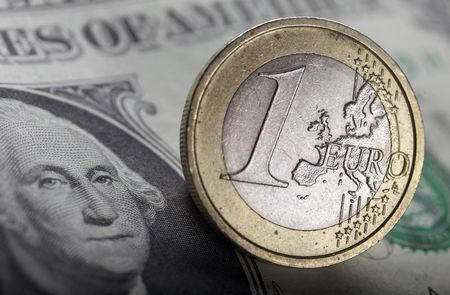In early European trading on Friday, the U.S. dollar saw a slight uptick, although it remained on track for a significant weekly decline. This downward trajectory was influenced by Federal Reserve Chair Jerome Powell’s indication of potential interest rate cuts in the coming months. Meanwhile, the euro retreated from recent highs following the European Central Bank meeting.
As of 04:15 ET (09:15 GMT), the Dollar Index, which measures the dollar against a basket of six major currencies, hovered slightly higher at 102.787. Despite this marginal increase, the dollar was poised for a weekly loss of approximately 1%, marking its most substantial decline in nearly three months.
Dollar faces hefty weekly loss
On Friday, the dollar showed signs of rebounding slightly after experiencing significant losses in the previous session following remarks made by Jerome Powell during his two-day testimony before Congress.
Powell’s comments, particularly his emphasis on waiting for sustained inflation around 2% before considering adjustments to monetary policy, suggested to the markets that the Federal Reserve might move, possibly in the summer, to dial back its level of economic restriction. Investors interpreted this as a signal of potential policy changes, and it would likely require a robust jobs report later in the session to alter this sentiment.
Forecasts for the February nonfarm payrolls indicated an anticipated increase of just under 200,000 jobs, a decline from the substantial gain of 353,000 jobs seen in January. Additionally, average hourly earnings were expected to rise by only 0.2% on the month, a slowdown from the 0.6% gain in the prior month.
Analysts at ING noted that the direction of foreign exchange (FX) markets on that day would likely be determined by the outcome of the payrolls report. Given Powell’s testimony, they suggested that markets might not hesitate to factor in more potential rate cuts.
Euro slips from near two-month high
In Europe, the EUR/USD pair experienced a slight decline of 0.1% to reach 1.0938. The euro retreated slightly after reaching an almost two-month high earlier on Friday, ahead of the latest reading of quarterly growth in the eurozone.
Data released on Friday revealed that German industrial production increased by 1.0% in January compared to the previous month, surpassing the anticipated 0.6% rise. This marked a significant improvement from the previous month’s revised 2% decline.
The European Central Bank opted to keep its benchmark rate unchanged at 4% and hinted at a potential cut in June, mirroring actions taken by the Federal Reserve in the United States.
However, given that the Fed funds rate stands at 5.25%-5.5%, traders perceive the Federal Reserve as having more flexibility to implement aggressive rate cuts.
“US payrolls will determine the direction for EUR/USD: expect some resistance at the key 1.1000 level should the dollar decline further today,” noted analysts at ING.
Meanwhile, the GBP/USD pair traded 0.1% higher at 1.2820, with the British pound benefiting from the weakness in the dollar. Sterling saw a gain of over 1% for the week and reached a new high for 2024 earlier in the session.
Yen sees strong weekly gains
In Asia, the USD/JPY pair traded 0.2% lower at 147.76, with the yen recording a gain of over 1.5% so far this week, marking its strongest percentage rise since December.
Traders are adjusting their positions amid speculation that the Bank of Japan may consider ending negative interest rates in the near future, diverging from the anticipated trajectory of U.S. interest rates.
The yen has experienced a weakening trend for the majority of the past two years as the Bank of Japan maintained its ultra-easy monetary policy stance, while other major central banks pursued aggressive interest rate hikes to combat inflation.
Meanwhile, the USD/CNY pair edged lower to 7.1922, while the AUD/USD pair rose 0.3% to 0.6637, and the NZD/USD pair rose 0.2% to 0.6182. Both the Australian and New Zealand dollars have posted gains of 1.5% and 1.1% respectively for the week.
